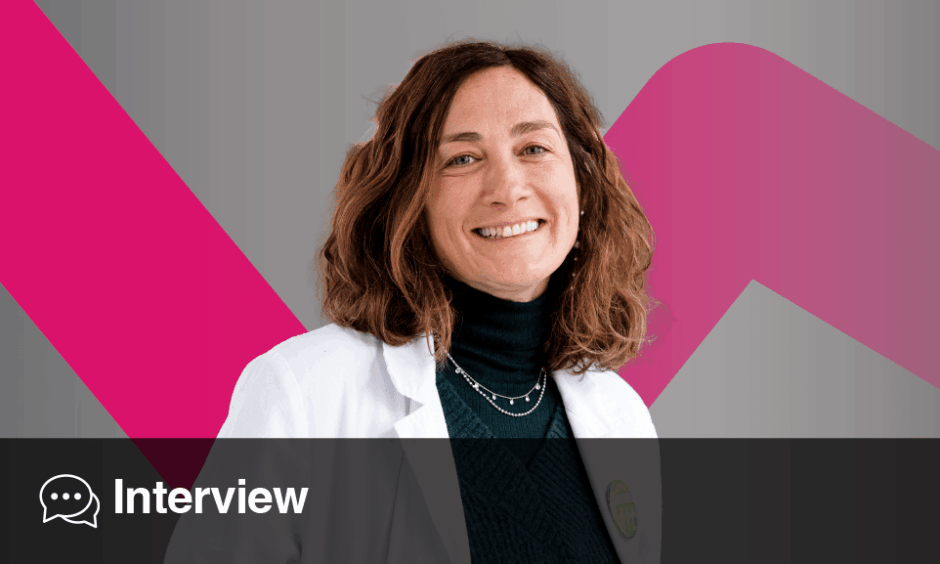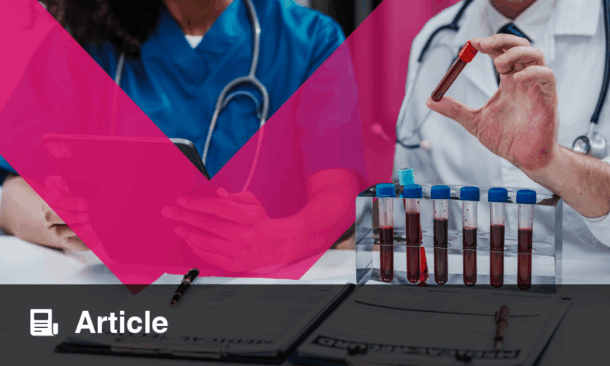Elena Zamagni | Associate Professor of Haematology, University of Bologna, Italy
Citation: EMJ Hematol. 2025;13[1]:75-78. https://doi.org/10.33590/emjhematol/LWSA4002
![]()
You have dedicated your career to advancing our understanding and treatment of multiple myeloma. What first inspired you to pursue this specific area of haematology?
In the beginning, when I was very young, I was more interested in acute leukaemia and the suffering of young people. When I got to university, I was enthusiastic about my lessons and about the clerkship in haematology that I did while I was there. However, my former boss and university professor, Cavo, was the one who asked me to join the myeloma field. At that time, in the late 90s, not many options existed for multiple myeloma, so I joined the field without knowing what might happen in the next 10 years. Although it might not have been a choice I made alone, I consider myself lucky that it happened.
At the 2024 American Society of Hematology (ASH) Annual Meeting, you discussed an ambitious project combining real-world data with large-scale biobanking. Can you walk us through the initiative and the kind of insights you hope it will generate for future treatment strategies?
It is a very ambitious Italian project involving real-life biobanking. When patients agree to take part in clinical trials, they are lucky because 1) the treatment they receive may be the most modern, innovative, and advanced one available, particularly when taking the approval and regulatory status of the drugs into account, and 2) within clinical trials, they receive prognostic factors and response assessments in the best, most sensitive, and most up-to-date way, using the most modern techniques. That’s not the case in everyday life because the resources are not there for everyone, and not all centres have the necessary expertise. There could also be clinical or timing reasons for being unable to perform these tasks or provide this treatment.
With biobanking, we would like to ensure that it is available for the whole patient population. This is a project that enrolled consecutive patients, without using specific inclusion criteria such as performance, status, age, phase of the disease, etc. Their bone marrow and peripheral blood will be biobanked, and in the future, when we want to look for a progressive factor or search for a biomarker of response, we will have samples we can use. I think this will ensure high-quality management of the whole patient population without prioritising those who might be younger or more physically fit.
This is ongoing, as it isn’t easy to collect samples outside of clinical trials since patients might have more urgent clinical issues. In this context, sampling may not be the top priority, but we try to keep the endpoint in mind. Not every centre is involved, but perhaps two-thirds of haematological centres in Italy are participating. I think it’s a very worthy effort.
One of the pitfalls of real-life analysis is that you’re often lacking biomarkers, fluorescent in situ hybridisation (FISH) analysis, or minimal residual disease (MRD) testing, because you might have the clinical data, but you don’t have other data for support. We would like to try to fill this gap and have biological data available for patients.
MRD remains a major focus in your research. How close are we to establishing MRD as a standard endpoint in multiple myeloma treatment?
I think we are very close to this goal. In the USA, we may be even closer, because the FDA formally approved it as an early endpoint. The European Medicines Agency (EMA) hasn’t reached this point, but it seems like we are heading in the right direction.
In principle, no matter what stage the authorities are at in the decision-making process, without their approval, we are going nowhere. However, I think it is accepted in the scientific community and by physicians, and I can see in my routine practice that it is now accepted by patients, who are starting to ask about their results. Thus, we are getting closer and closer to the objective.
What is likely not yet at the right point is the homogeneity in countries all over the world. For example, not all centres in Italy can perform MRD testing. Although we are in the process of creating a network, until the network is complete, this will always be the case. It is, in my opinion, a gap in multiple myeloma treatment. The opportunity to receive MRD testing and results should be available to all patients and centres. Wherever you are in the country, you should be treated in the same way.
In 2024, you co-authored international guidelines on T cell-engaging bispecific antibodies with the International Myeloma Working Group. What are the key takeaways clinicians should be aware of?
I think that was a very important paper, because perhaps half of the physicians in Italy, as well as in other countries, are not used to the management of patients with bispecific antibodies. In many countries, it has only received approval outside of clinical trials for a few months now. Those who could not get and do not have access to clinical trials are not familiar with this management.
Bispecific T cell engagers are excellent, very potent drugs that induce a high rate of high-quality responses. As there are no age barriers and no specific organisational issues, in theory, every physician and patient could use this treatment. While it is a broader option, it’s not an easy treatment to perform. The major issues with T cell engagers are infections, issues such as hypogammaglobulinemia, and patient management outside of treatment units. All these topics are touched on and explained in the paper, but we also tried to provide practical guidelines and recommendations, as it’s necessary for physicians to learn how to manage this. It could also be a resource for patients and local medical authorities, particularly those who are less used to this treatment, to turn to.
Looking back on your career so far, which achievement or contribution are you most proud of, and why?
My first love was imaging techniques, so that was my first approach to clinical research. The first time I gave a talk was in 2005, and it was about a prospective study that we ran in Bologna comparing functional imaging techniques with whole-body X-rays. This focus on imaging followed me throughout my career. I achieved many things with the International Myeloma Working Group, the International Myeloma Society, and nuclear medicine physicians with whom I collaborate in Bologna. Many improvements were offered to patients: the use of functional techniques, the use of imaging techniques to evaluate responses after therapies and establish MRD imaging categories, and the standardisation of imaging techniques. We also have a paper outlining recommendations for the use of imaging techniques in multiple myeloma, particularly in the early phases. I think that I was able to contribute to all of this, which will always remain a part of me.
Looking to the future, where do you see your research heading next, and which emerging areas in myeloma science excite you most?
The first thing I’d like to mention is the potential for a cure, which we should start systematically aiming for. For example, in the annual response criteria that will be provided either this year or early next year, the word ‘cure’ will appear for the first time, because we are starting to think about it. We need to look at which patients can currently be cured with the prognostic stratification and treatments that we have now. Moreover, we need to consider who the patients with huge unmet clinical needs are.
Systematically applying MRD-tailored treatment over the next few years will also be important, and I think it’s time to have some recommendation guidelines. Several trials have been run regarding MRD tailoring, and a majority did not answer the relevant clinical questions. These questions still exist, so there are more ongoing trials, some of which will be presented for the first time in future congresses.
Lastly, we should focus on reshaping the treatment of multiple myeloma. Rather than using continuous treatments, we should try to find out who can receive fixed-duration treatments, how they can receive them, and in which contexts. We need to use the potent immunotherapies that we have, such as CAR-T cells and bispecific antibodies, and consider fixed-duration treatment as another endpoint.
As both a clinician and an educator, how are you preparing the next generation of haematologists to navigate the evolving landscape of precision medicine in multiple myeloma?
There are many enthusiastic and well-prepared young people who possess a great deal of knowledge, but I think it’s important to teach them to integrate everything they know. It’s also important in the first year to see what others are doing and understand that a vital part of research groups is the discussion. We are responsible, as older and more experienced physicians, for teaching them that teamwork is essential. The idea of the lone genius doesn’t exist anymore. We need to have discussions because that is how we generate ideas.
We also need to teach them to ask for help if they need it. There might be a point in life where you’re juggling kids and a career, and asking for help might be necessary. You should ask, because in my opinion, it all comes back around. There might be a time when you’re asking and a time when you’re giving. This is what I’m trying to teach my fellows and PhD students. It’s important to exchange and witness support for each other.
Lastly, I’m always telling these young people that they are very lucky, because with multiple myeloma, we have gone through a true revolution in the last 10–15 years. They are seeing incredible things, such as new treatments, endpoints, and biomarkers, as well as MRD and demonstrations of mechanisms of resistance (for those more interested in biological research). There are so many different directions they could go in, and although competition is an inherent part of our job, there is enough room for everyone.







